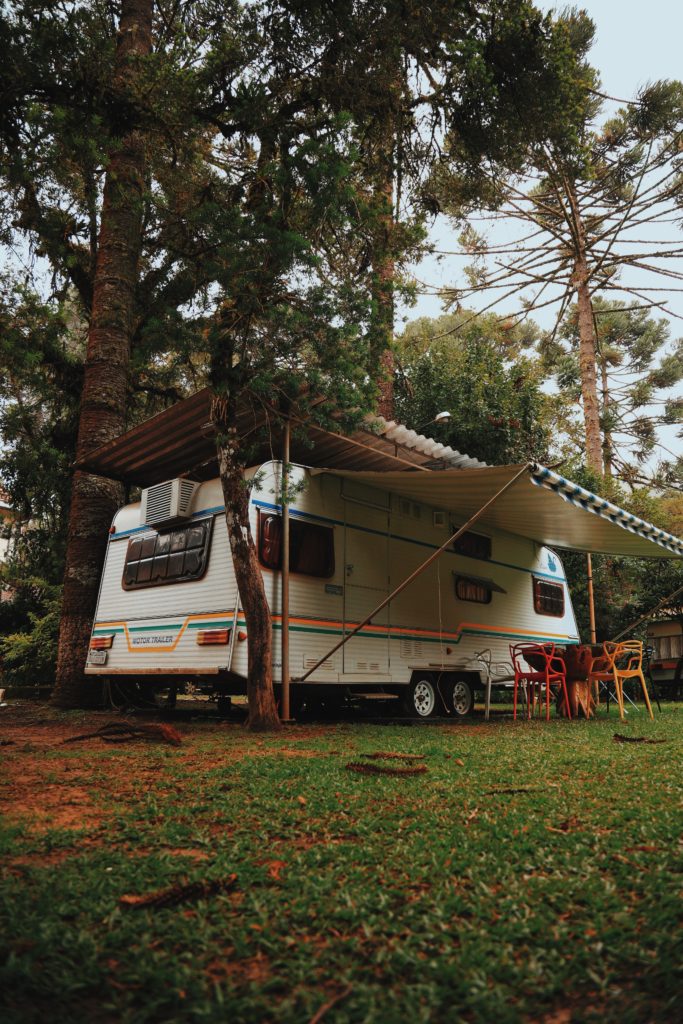At one point or another, we have all dreamt of hitting the road and never looking back. To have our whereabouts be unknown, to sleep and wake in a random location every day. That same dream is shared by tons of digital nomads, adrenaline junkies, and the everyday minimalist.

But how do you turn that 25-foot vehicle into a comfortable home? How do individuals from different avenues ensure comfort and functionality? What are the challenges of life on the move?
We reviewed tons of RV building approaches to give you the best choice when tackling your RV building experience. From budgeting to building recommendations, here are some suggestions on how to make your RV into the ideal home.
1. Budget For $6,000 As a Minimum
Whether you own an RV already or are in search of the perfect RV, know that your personal touch comes with a cost. Depending on the condition of the vehicle, renovations can be costly when looking at flooring, insulation, and decor.
The typical RV renovation cost can reach $20,000 depending on the type of furniture and additional amenities. Purchase the best quality materials within your price range to ensure durability and comfort within your new home.
It is also important to note that newer vehicles may need fewer renovations and have lower mileage, but their cost can be a bit higher. If you’re on a budget, it is possible to find vehicles with relatively low mileage and few needs for renovations, it just depends where you search.
2. Take Your Time
The typical installation time for an RV is 7 weeks, including lighting, bed frames, and kitchen installations. For those of you who are new to the building process entirely, the installation time could take longer than 7 weeks depending on the planning process.

Plan all demolitions and installations ahead of time. The last thing you want to do is pull off wall panels, floorboards, and insulation because you failed to plan accordingly. While winging it can sometimes work, following a plan with your RV will save you from making costly mistakes.
3. Use Versatile Items
While builders should avoid skimping out on the foundation of their RV, there are a few cheap items we recommend for RV life. Plastic items such as Euro containers or small storage bins are versatile, easy to clean, and widely found.
Euro containers can be best used for storing dirty shoes or equipment after a long day out. Most builders opt for wood drawers when prioritizing aesthetics, but this can be impractical as wood can rot and is difficult to clean when compared to plastic.

Storage bins are a lighter option when compared to euro containers. If weight is an issue, opting for small storage bins can be a great alternative.
4. Keep Copper Piping on Hand
Keeping copper piping on hand is a must when living in an RV or van. Not only is copper piping widely available and affordable, but copper piping can also be used to preserve the aesthetic integrity of your RV while lasting 50-70 years.
If you’re looking for a new curtain pole, cable hider, or simply want some copper accents, forging copper gives long-term results at a low cost.
5. Make It a Home
Living life on the road can be difficult with long drives, exhausting temperatures, and unexpected circumstances. Prioritize creating a space that allows you to unwind and relax after a hectic day.

For many, comfort relies on multiple factors such as how my mattress feels, the lighting in the room, and even the state of my home. Prioritize leaving windows uncovered when building your RV if you love the sun shining through. Invest in a foam mattress or even child-proof your home for your peace of mind. Essentially, set up your home for success.
6. Secure Everything
If there’s one thing that traditional homeowners have an advantage on, it’s the lack of movement in their homes. Investing in bungee cords is not only gonna save you from a catastrophe, but they’re also going to become one of the most useful tools you own.
Tactics to keep your items from sliding away are using non-slip matting, adding loose items into containers, and keeping all windows closed. Not only can the wind knock over some of your items, but dust can also blow into your home.
For all of my refrigerator people, invest in latches that will secure your refrigerator door and the items within the refrigerator. This includes adding latches to every cabinet and door within your home to eliminate the doors from flailing open.
7. Plan for Nonideal Circumstances
While it’s easy to plan on always finding an ideal parking spot, this is not always the case, especially when traveling. Be sure to include leveling blocks within your RV to ensure a safe journey. Uneven weight distributions can be detrimental to both your tires and your RV.

Other important accessories to include are:
- Water hose
- Beam deflectors
- Extra power sources
- Air compressors
- Wifi router
8. Install EMS Surge Protectors
Your RV’s power source is the last thing you want to worry about when on the road. In the event of a power surge, without an EMS protector, you could be facing the cost of replacing the entire electrical system within your RV.
If you’re someone who likes to eliminate catastrophes, purchasing a surge protector may be a viable option as this eliminates over and undervoltage from damaging your electrical system.
9. Install Water Pressure Regulators
Similar to the EMS surge protector, water pressure regulators are strongly recommended when living the RV life. A water regulator ensures that your RV’s piping remains intact by avoiding low or excess pressure within the pipes.

10. Include Waste Disposal Methods
A 15 to 20-foot sewer hose is an excellent investment to dispose of waste effectively. Anything too long can be a hassle to carry, but anything shorter could be ineffective.
In addition to a sewer hose, purchasing a clear sewer connector is a great addition to simplify the disposal process. While not necessary, the clear sewer connector allows the user to see when the disposal process is finished.
Conclusion
Building an RV from scratch can be tedious with many unpredictable variables to consider. But do not let the challenge deter you from a world of experiences and memories. The sky’s the limit once you identify all the small details.

No Comments